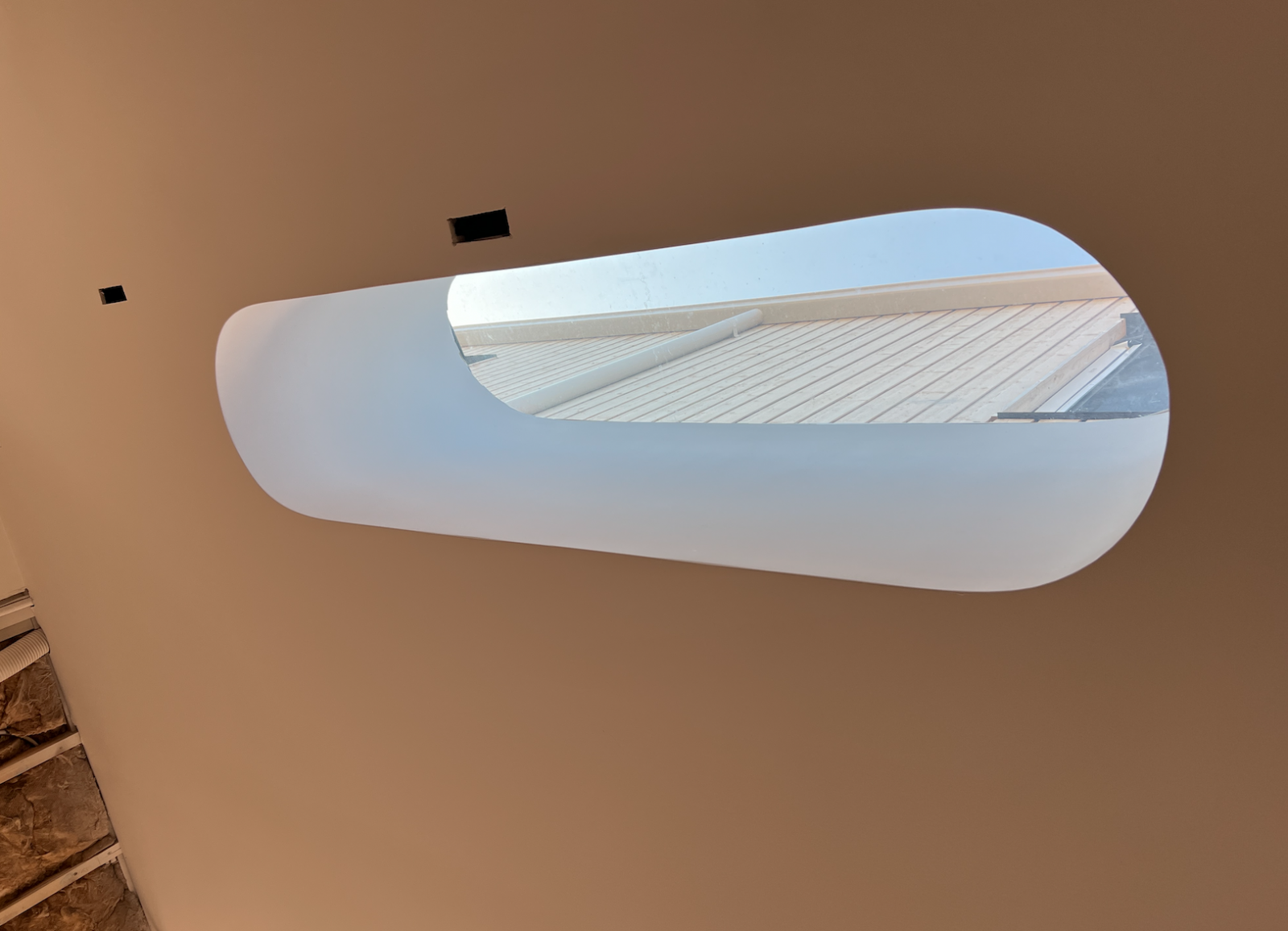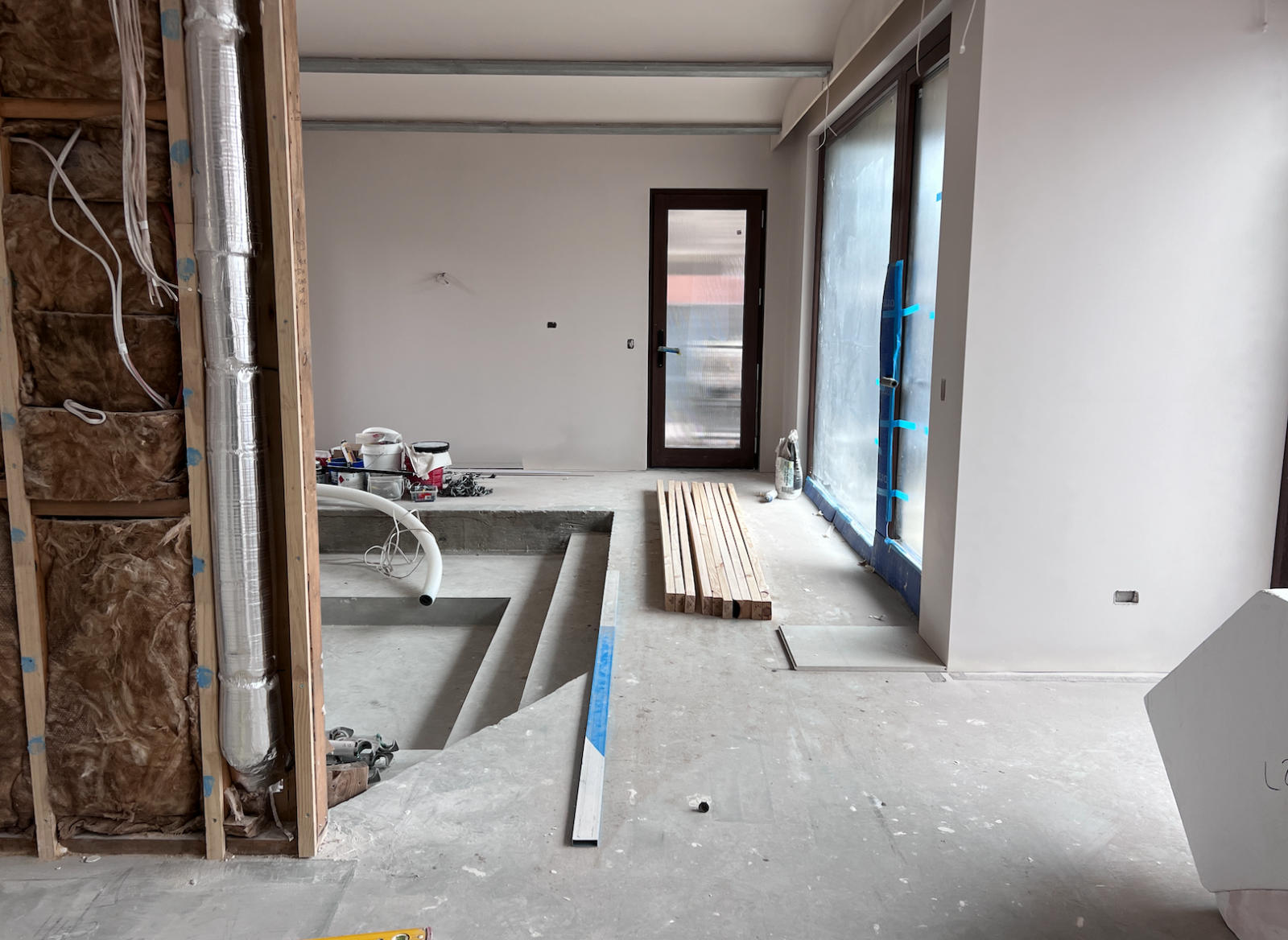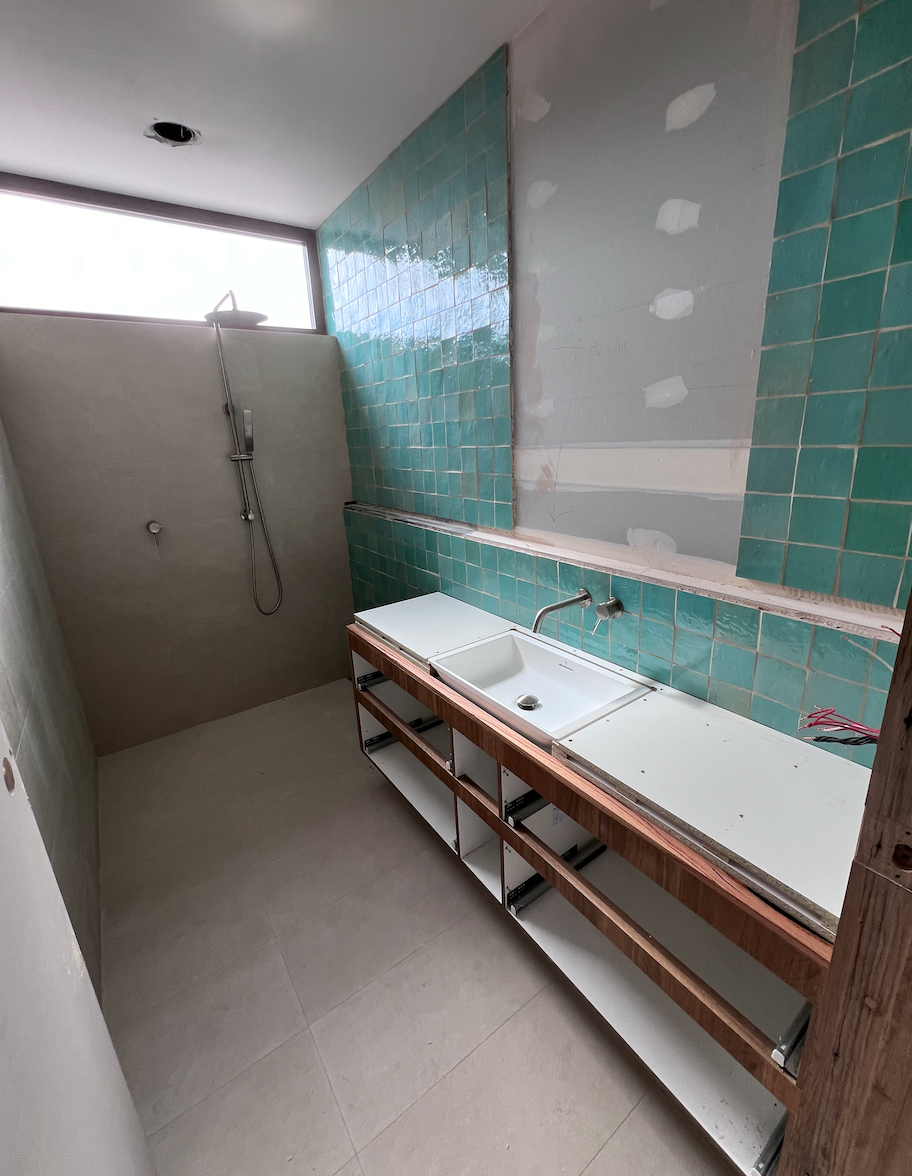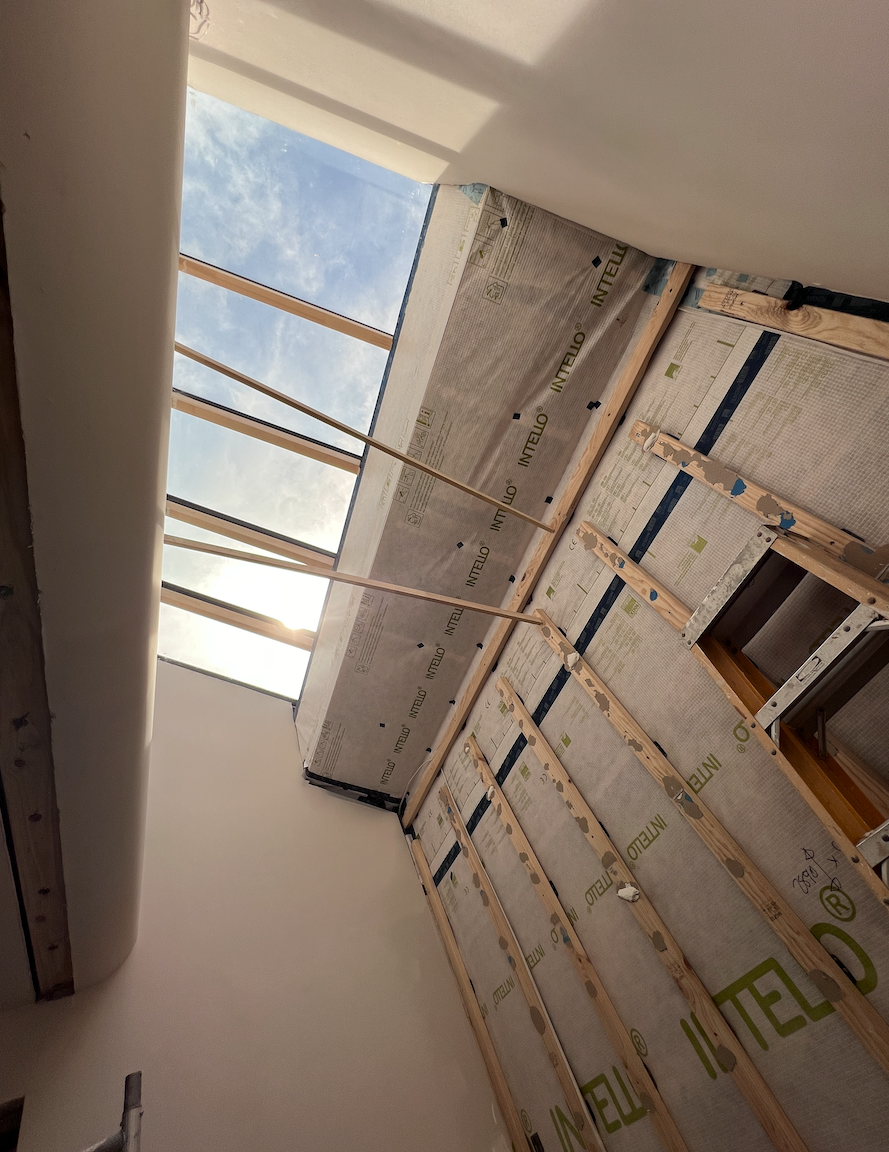An airtight defence: Why ‘passive building’ is the future
As we move into some warmer weather, many of us are staring accusingly at our air-conditioning units. Unless your home has been built passively, that is. In which case, we’re sure the changing of the seasons has barely registered inside your perfectly insulated 4 walls. We visited Maurie Novak Architecture’s PassivHaus construction site in St Kilda – which will soon become his home and office – to find out why this architectural approach is supreme.
First of all, what is passive building?
The easiest way to explain the concept of passive building is to explain what it’s not.
‘Here in Australia, many homes are just glorified tents,’ Maurie says. ‘You turn your heating on, you turn it off… then 3 hours later, your house is freezing, and you need to turn it back on.
‘By really insulating the house, by making it airtight, you’re essentially maintaining whatever the internal temperature is,’ Maurie continues. ‘And with a ventilation system that constantly brings in fresh air from outside, you’ve got yourself a very healthy living environment.’
As we walk around his St Kilda site, Maurie points out the intricate web of pipes, vents and insulation inside the wall frames. The difference from standard construction is clear.
‘For a building to be considered a PassivHaus, all the holes in the insulation can’t exceed the surface area of a credit card,’ he explains. ‘So, even as we’re stapling more insulation to the frame, we’re going over the staple holes to make the space as airtight as possible.’
But all the hard work pays off in the end.
‘Cost-wise, a PassivHaus can end up using 75-90% less energy on heating & cooling than a standard house,’ Maurie highlights.
.png)
Is it really that easy, being green?
Maurie Novak Architecture is all about doing things differently.
The goal is to leave a positive impact on the world, integrating sustainability, energy efficiency and smarter thinking into every project it completes.
‘The reason I like passive building is because it does tick all those boxes, but it makes sense for so many other reasons as well,’ Maurie shares. ‘The use of smart materials, well-built windows, things like that. It all contributes to our environmental footprint.’
And Maurie urges everyone to jump on board.
‘I believe sustainability is key to our ongoing built environments,’ he says. ‘And when so much of the industry is pushing towards green technologies, it’s only a matter of time before it becomes the norm.’

Is fresh air part of the blueprint?
We mentioned the air circulation system earlier, but how does it actually work?
According to Maurie, it’s simpler than you might think.
‘The vents are always sucking fresh air into the house,’ he explains. ‘And, after going through a heat exchanger, all that fresh air gets distributed to the rooms in the house.’
This means that even if the air you’re bringing in from outside is only 1°C, the PassivHaus’s infrastructure will transfer the heat from its internal spaces to the outside air, so it can be a balmy 22°C inside – while still maintaining all the air’s freshness.
‘You can even have pollen filters for people that are asthmatic,’ Maurie continues. ‘It’s a very healthy and safe living environment.’

I can still have windows… right?
Yes, you can still have windows! Passive building involves creating an airtight space. But that doesn’t mean you have to go from living in a glorified tent to a glorified box!
‘I’ve seen some passive buildings around with these small, poky windows that don’t open,’ Maurie says. ‘And that’s because some people think they’re not allowed to have windows at all.
‘But that couldn’t be further from the truth!’
And as Maurie leads us through more areas of his up-and-coming PassivHaus – pointing out all its large, sprawling windows – it’s clear he practices what he preaches.
‘Obviously, factors like sun orientation contribute to window placement, but in passive building, the focus is more on the actual installation of the windows,’ Maurie explains. ‘By now, consumers understand the term ‘double-glazed window’. But you could have high-performing glass with average frames that don’t insulate the house – which means you’ve only gone halfway.’
But in Maurie’s buildings, he doesn’t do anything by halves. Which means great windows. Great frames. And great insulation.

If I spend more today, will I save big tomorrow?
If passive building is so great, why aren’t more people doing it?
According to Maurie, it all comes down to costs.
‘The only drawback I can see in passive building is that there are added construction costs, but whether it’s worth it depends on what you’re building for,’ Maurie says. ‘Because if you plan to live in the space for many years, the extra investment will pay off in just a few short years thanks to lower energy bills.’
Another payoff? The durability of a passive building.
‘Passive building requires so much attention to detail, which is very different from the usual mass-produced houses that fill our suburbs,’ Maurie explains. ‘The focus is always on how the end product all joins together, and how to maximise the building’s longevity.’

Can you really blend beauty and functionality?
We’ve heard about the infrastructure of Maurie’s latest project – but what about the fun stuff?
‘Seeing as this is going to be my house, I’ve been able to incorporate all my favourite design elements,’ Maurie shares. ‘Outside, we’re going to have these buttress structures, inspired by Notre Dame. The staircase balustrade is going to look like a piece of fabric that’s being blown in the wind. There are a lot of curves throughout the house. The list goes on.
‘Clearly, the natural aesthetic is my favourite!’
And the cherry on top of the environmentally friendly cake?
‘A lot of the timber we’re using here has been upcycled,’ Maurie shares. ‘We took all the timber from the demolition of this house, got it re-milled and made the doorframes out of it. A lot of the cabinetry is going to be made out of it, as well!’

What’s next for Maurie Novak Architecture?
As the construction of Maurie’s first certified PassivHaus comes to an end, he’s beginning to look forward to what’s next.
‘I’ve learned so many lessons from this project that I’ll take through to my next one,’ Maurie admits. ‘Because this is my own place, I’ve just thrown everything at it – trying a bunch of new and complex things I’ve never tried before. Which will hopefully make any project I do after this much easier!’
And what might that next project be?
‘There are so many things I’m interested in that I haven’t had the chance to do yet,’ Maurie shares. ‘Like the Living Building Challenge – which focuses a lot more on the origin of the materials and the carbon footprint of the whole build.
‘All in all, construction is going in an exciting direction, and I’m spending a lot of time trying to think about how I can do something different to define myself in this market,’ he continues.
‘And I think this – sustainable urban development – is the most exciting place to make my mark.’

.jpg)